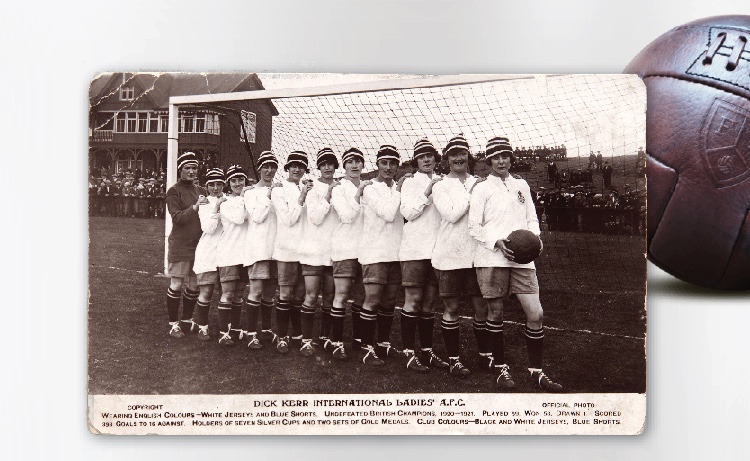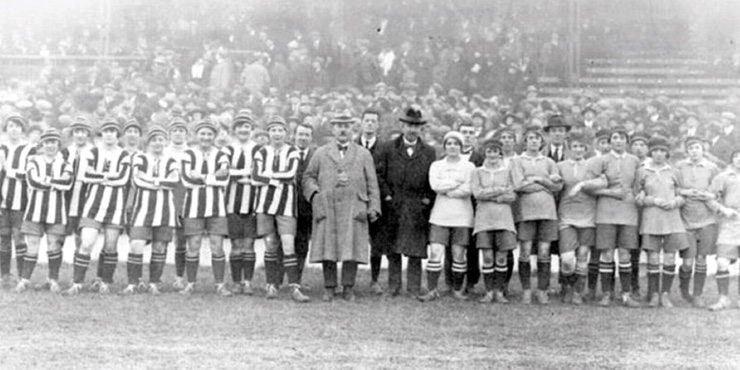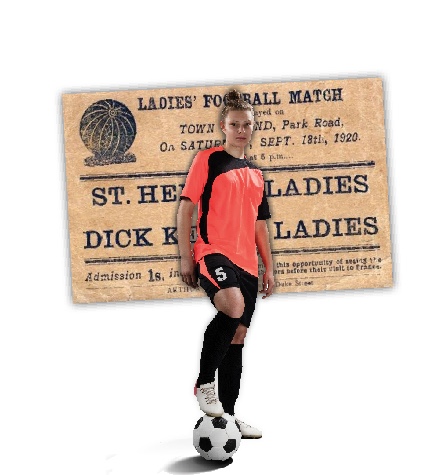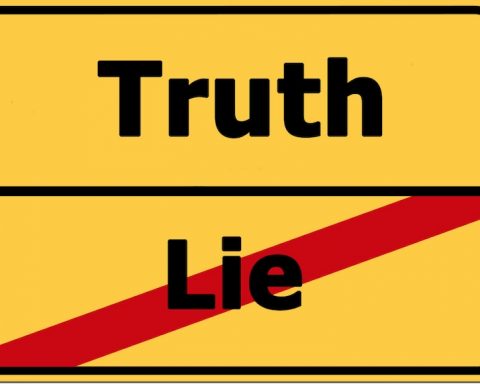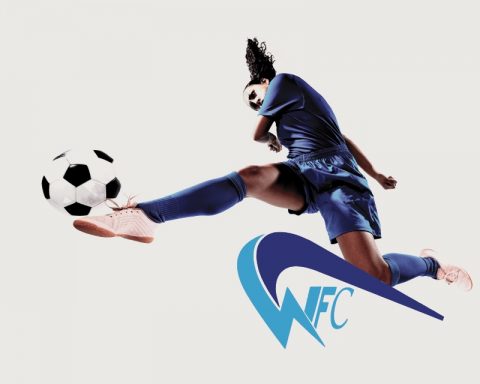When Women`s football was bigger than men`s
Thanks to greater media attention and broadcasting in recent years, you might think women’s football has never been more popular. But you’d be wrong. For those who still like to criticise the women’s game as being somehow less important or commercially viable, here’s the truth: women’s football in the UK, where football was invented, was once even more popular than the men’s, and would have become bigger and bigger if it hadn’t been forcibly curtailed by the English FA.
Do you want to be part of “curtailing” women`s football again or helping change the world for one of respect and inclusion? It’s a story that defies the stereotypes of sport and the sexes, and has its roots in the dark years of World War One, when the nation’s young men departed en masse for the trenches. In their abrupt absence, women found themselves thrust from domestic drudgery into factories all over the country.
It was tough work – many women, known as “munitionettes”, were tasked with creating armaments, and had to work amid dangerous machinery and noxious chemicals. Health and welfare advisors were sent by the government to keep tabs on the well-being of this new generation of workers, and encouraged sports as a respite from the harsh environment.
Factories began to set up their own women’s football teams, and before long one team stood out as the most popular. This was Dick, Kerr’s Ladies FC, so-named for the Preston-based Dick, Kerr & Co munitions factory the players worked at. Founded in 1917, the team rapidly became the talk of the town, drawing thousands of onlookers to their very first match. As with other women’s teams, their games raised money for charity and the war effort, and the concept of females playing football was generally regarded as a wholesome novelty. But the sheer popularity of Dick, Kerr’s Ladies FC helped change that perception, and establish women’s football as a real, legitimate sport in its own right.
As this popularity grew, there was a worry that the men’s game was in danger of being completely overshadowed. Frank Walt, secretary of Newcastle United, echoed widespread sentiment in the upper ranks of the FA when he declared that “the game of football is not a woman’s game” and “the time has come when the novelty has worn off and the charitable motives are being lost sight of, so that the use of the professionals’ ground is rightly withdrawn.”
Yet there were possible political reasons as well. Teams like Dick, Kerr’s Ladies FC, as well as raising money for charity, had also been getting involved in left-wing causes, such as fund-raising for miners protesting wage cuts in 1921. As Barbara Jacobs, author of The Dick’s Kerr’s Ladies, points out, women’s football had “become a politically dangerous sport, to those who felt the trade unions to be their enemies”. That said, many men were appalled at the resolution. Major Cecil Kent, secretary of Liverpool FC, said that “the only thing I now hear from the man in the street is ‘Why have the FA got their knife into girls’ football? What have the girls done except raise large sums for charity and play the game? Are their feet heavier on the turf than the men’s feet?’” Women’s teams continued to play on non-FA pitches, but the lack of media visibility inevitably dimmed the game’s allure. It’s only now, all these decades later, that women players – picking up the baton from Lily Parr and other trailblazers – are being given their rightful place in the limelight. Something that fans have enjoyed so much about the women’s game is its authenticity, seen in players’ emotional reactions as well as in the way they play, and in their close relationships with fans.
But this is something that money can change. So how can the women’s game maintain its authenticity as more money inevitably enters the mix? Where does the money currently come from? Most women’s teams are reliant on financial support from their club’s overall group and their affiliated men’s teams. Shouldn`t this stop. Does this not sound like housewives who depended on the bread winner. Now women work and many win even more bread than men.
It`s time for the same to happen with women`s football. Independent and being supported, at least the same as men`s football is. What needs to change? In my opinion, simply the mindset of the top people the decision makers in football. In our case the GFA but the society has to help them and not criticise or stop them but encourage them to implement change for the good of our daughters who will become wives, mothers and grand mothers. No society can thrive without women. In fact, there can simply be no life without women.
Where could more money come from? Of course, increasing attendances would help with income and investment (more money coming in means more money to spend). However, men’s teams at the highest level, such as the Premier League, get most of their money from broadcasting, followed by commercial or sponsorship opportunities (shirt sponsorship, commercial partners), with the smallest proportion from matchday attendance. This changes as you go down the men’s leagues with (very high) dependence on ticket sales in the lower leagues. The change all starts with You, the Fans. Are we capable of changing our own mindsets?
Changing mindsets and promoting inclusivity in women’s football is a collective effort that involves various stakeholders, with fans like you right at the top.
Here are a few ways fans can contribute to the growth and success of women’s football:
- Attend Matches: Supporting women’s football by attending matches is a tangible way to show your interest and enthusiasm. Increased attendance can lead to higher revenue and investment in the sport.
- Promote and Share: Utilize social media platforms and other channels to promote women’s football and share news, highlights, and stories about players and teams. This can help create more visibility and generate interest among a wider audience.
- Challenge Stereotypes: Take a stand against gender biases and stereotypes associated with women’s football. Encourage others to appreciate the skill, athleticism, and competitiveness of the game, regardless of gender.
- Engage with Media: Reach out to media outlets and sports organizations to express your support for increased coverage of women’s football. Encourage them to provide equal exposure and resources to promote the sport.
- Support Sponsorship: Show support for companies and sponsors that invest in women’s football. Patronize their products or services and express appreciation for their commitment to equality and inclusion in sports.
- Engage in Dialogue: Initiate conversations and discussions about women’s football with friends, family, and colleagues. Educate others about the history, achievements, and challenges faced by women in the sport.
- Advocate for Equality: Support initiatives that aim to achieve equal pay, resources, and opportunities for women in football. Encourage sports governing bodies and organizations to implement policies and programs that promote gender equality.
It’s essential to recognize that changing mindsets and promoting women’s football requires a collective effort from society, including fans, players, clubs, sponsors, media, and governing bodies. By actively supporting and advocating for women’s football, fans can contribute to creating a more inclusive and respectful environment for the sport to thrive.
Be a fan of https://www.gibraltarwavefc.com and help us help introduce change in our society.


